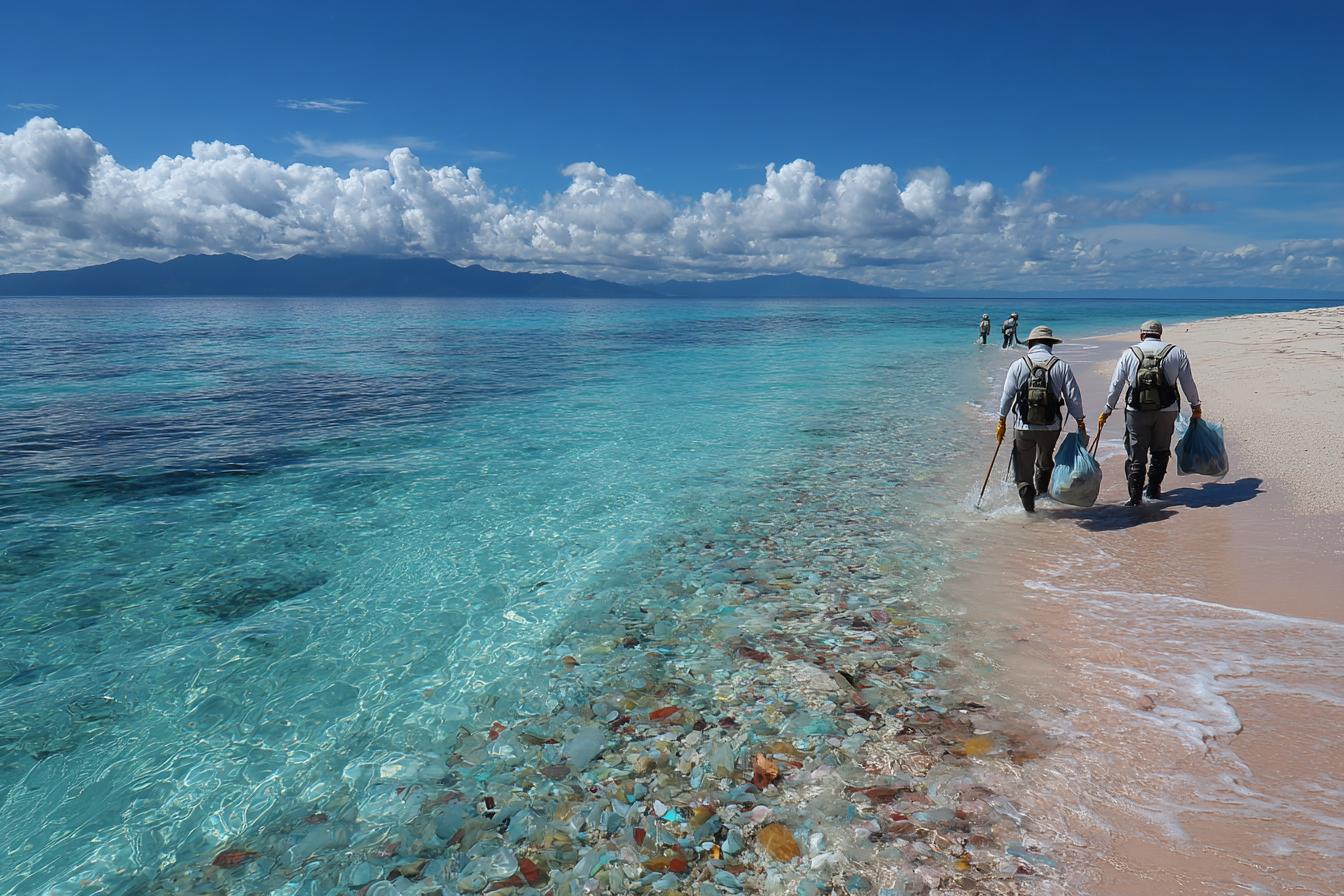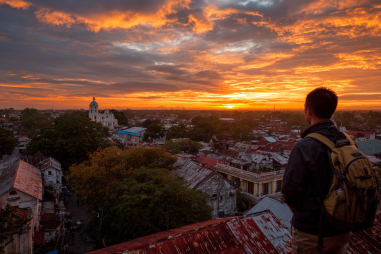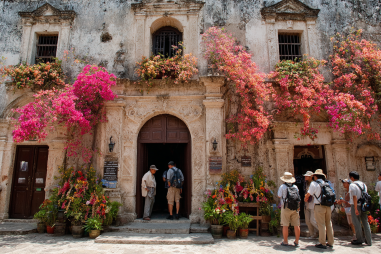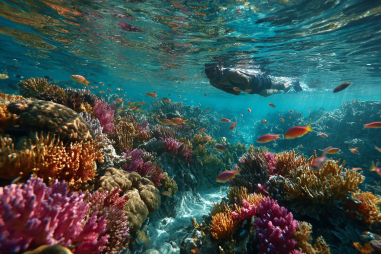Kalanggaman Island is a breathtaking paradise known for its pristine white sandbars, crystal clear waters, and rich marine biodiversity. However, its delicate environment faces increasing threats from tourism development and human activities. Preserving the island’s natural beauty and ecological balance is essential to ensure that future generations can continue to experience this unique destination. By understanding the importance of environmental preservation and practicing responsible travel, visitors can play a vital role in protecting Kalanggaman Island’s fragile ecosystem.
Why Environmental Preservation Matters for Kalanggaman Island
Environmental preservation is crucial for Kalanggaman Island because its ecosystem is both delicate and unique. The island’s sandbars, coral reefs, and marine life form a complex web of natural beauty and biodiversity that sustains local communities and attracts visitors worldwide. Preserving these natural resources not only maintains the island’s scenic charm but also supports the livelihoods of local fishermen and tourism operators who depend on a healthy environment.
When ecosystems are damaged, the effects ripple through the environment and the economy. Coral reefs, for example, protect shorelines from erosion and serve as nurseries for many fish species. If these reefs are harmed due to pollution or careless tourism, fish populations may decline, affecting food sources and income. Thus, environmental preservation is essential to balancing ecological health and sustainable tourism development.
Current Environmental Challenges Facing Kalanggaman Island
Despite its protected status, Kalanggaman Island faces multiple environmental challenges largely driven by increased tourism pressure. Some of the major issues include:
- Waste Management: Improper disposal of trash and plastic pollution threaten the marine environment and wildlife.
- Coral Reef Damage: Anchoring boats on reefs, collecting coral souvenirs, and snorkeling without care contribute to reef degradation.
- Erosion and Habitat Disturbance: Heavy foot traffic on sandbars and beaches can accelerate erosion and disturb nesting sites for seabirds.
- Water Pollution: Discharge of untreated wastewater or fuel spills from boats can pollute the coastal waters.
Addressing these challenges requires collective efforts from tourists, local authorities, and communities to promote sustainable practices and protect the island’s natural resources.
Guidelines for Responsible Tourism on Kalanggaman Island
Responsible tourism is key to minimizing the environmental footprint of visitors while maximizing positive impacts on local communities. Here are some guidelines to practice:
- Respect Local Rules and Regulations: Follow guidelines set by local authorities such as designated camping areas, campfire restrictions, and waste management protocols.
- Travel Light and Avoid Single-Use Plastics: Bring reusable water bottles, bags, and containers to reduce plastic waste.
- Practice “Leave No Trace”: Carry out all trash, avoid leaving food scraps, and do not disturb natural habitats.
- Be Mindful While Snorkeling and Diving: Do not touch corals, avoid standing on reefs, and refrain from collecting marine life or souvenirs.
- Limit Noise and Light Pollution: Keep noise levels low to avoid disturbing wildlife, and minimize use of artificial lighting at night.
By following these practical steps, travelers can help preserve Kalanggaman’s natural charm and ensure a safe and enjoyable experience for everyone.
Community Initiatives and Conservation Efforts
Local communities, non-governmental organizations, and government bodies have implemented several initiatives to protect Kalanggaman Island’s environment. These efforts include:
- Beach Clean-Up Campaigns: Organized regularly to collect trash and raise awareness about pollution.
- Environmental Education Programs: Teaching locals and visitors about the importance of marine conservation and sustainable tourism.
- Marine Protected Areas: Zones where fishing and other harmful activities are regulated or prohibited to allow ecosystems to recover.
- Local Ecotourism Development: Promoting responsible tourism that supports conservation and benefits the community economically.
These initiatives demonstrate a shared commitment to preserving Kalanggaman Island’s natural heritage and provide opportunities for visitors to get involved and contribute.
How Visitors Can Minimize Their Environmental Impact
Travelers can adopt simple yet effective practices to reduce their environmental footprint while enjoying the island’s beauty. Here are some actionable tips:
- Use Eco-Friendly Sunscreen: Choose reef-safe sunscreen to protect marine life from harmful chemicals.
- Dispose of Waste Properly: Bring biodegradable bags for trash and participate in beach clean-ups when possible.
- Choose Sustainable Transport: Opt for group boat rides or local ferries when available to reduce fuel consumption and emissions.
- Support Local Vendors: Purchase snacks, souvenirs, and services from local businesses that practice sustainability.
Every small action adds up to make a big difference in protecting Kalanggaman Island’s ecology.
Tips for Beach and Marine Protection
Preserving the health of Kalanggaman’s beaches and surrounding marine environment requires care and attentiveness from visitors. Consider these guidelines when exploring:
- Avoid Removing Sand or Plants: The island’s white sandbars are sensitive; taking even small amounts can cause erosion and habitat loss.
- Do Not Feed Wildlife: Feeding fish, birds, or other creatures can disrupt natural behaviors and ecosystems.
- Anchor Boats Responsibly: Use mooring buoys if available; avoid dropping anchors directly on coral reefs.
- Practice Responsible Snorkeling: Observe marine life without touching or chasing animals to avoid stressing them.
Respect for nature is the best way to preserve the beauty and biodiversity of Kalanggaman Island’s marine ecosystem.
Supporting Local Environmental Programs
One of the most effective ways for visitors to contribute to protecting Kalanggaman Island is by supporting ongoing environmental programs. Here’s how you can help:
- Donate to Conservation Groups: Many organizations operate programs that fund reef restoration, wildlife monitoring, and clean-up efforts.
- Participate in Volunteer Activities: Join community-led initiatives during your visit, such as beach clean-up drives or educational campaigns.
- Choose Eco-Friendly Accommodations and Tours: Patronize businesses that prioritize sustainability, use local resources responsibly, and employ local people.
- Spread Awareness: Share your experiences and best practices on social media or with fellow travelers to encourage responsible tourism.
By actively supporting these programs, visitors help ensure that Kalanggaman Island remains a protected haven for years to come.
Enjoying Kalanggaman Island as a Responsible Traveler
Visiting Kalanggaman Island offers a unique opportunity to experience some of the Philippines’ most stunning natural scenery. To keep this paradise safe, every traveler must act responsibly. By appreciating the importance of environmental preservation, understanding current challenges, and following responsible tourism guidelines, you become part of the solution.
Remember that your actions have a lasting impact, positive or negative. Minimizing waste, respecting wildlife, supporting community efforts, and promoting awareness not only protect the environment but also enrich your travel experience. What better way to honor such a beautiful place than by helping to keep it the same for future explorers and generations?
Travel smart, tread lightly, and help preserve the magic of Kalanggaman Island—one mindful step at a time.







